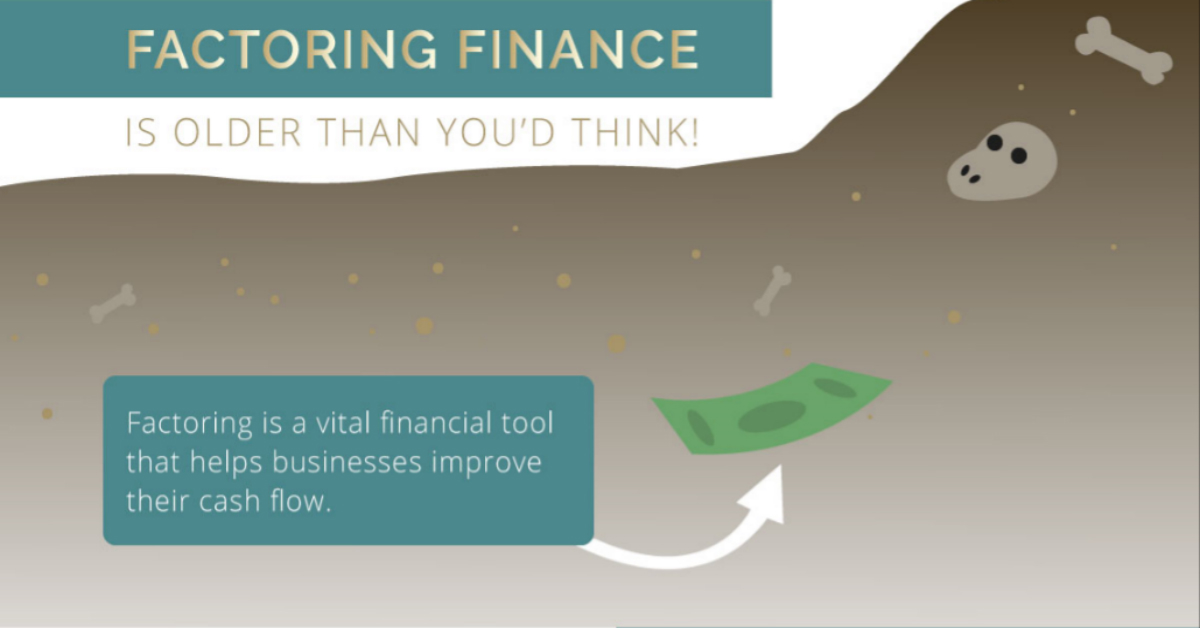Here at The Commercial Finance Group in Burbank, we’re proud to offer a full suite of alternative financing solutions to companies in the B2B sector. With our customized lending products–like factoring, receivables financing, and asset-based lending–we’re able to help modern companies achieve the growth and success they’re looking for, in a way that fits their needs and current financial situation.
We often talk about the way that digital payment processing and online technologies can work together to help B2B companies better market themselves to their chosen audiences, but it’s important to remember that the financing solutions offered at The Commercial Finance Group aren’t flash in the pan strategies.
Unlike merchant cash advances and other financial solutions offered by less experienced financial companies, factoring has been around for thousands of years. Literally. You see, as long as there have been businesses, there have been businesses with cashflow problems. Whether your business is selling innovative software or herds of goats, it’s necessary to have a reliable cash flow for expansion and marketing. Without an adequate supply of working capital, business run into problems that stifle growth and even threaten to shut them down completely.
The Commercial Finance Group is an advocate of small and medium-sized businesses in the Burbank area, and we don’t want to see any company in Burbank–or across the country–close their doors because of a lack of working capital.
Check out our factoring page to learn more about how this alternative form of financing can help your business, or check out the infographic below to discover the evolution of factoring from its early forms up to today!
Mesopotamia
Financing experts have traced the early roots of factoring all the way back to 1795 BC. It was at this time King Hammurabi ruled Mesopotamia, establishing Babylon as the world’s first great metropolis. This ancient city bustled with trade and commerce, which eventually led to the development of Hammurabi’s Code. This law included a form of factoring was first used in ancient traders’ business dealings. Following on the heels of the Mesopotamians were the Romans, who were the “first to sell promissory notes at discounted prices and to conscript collectors to settle their trade debts.”
Middle Ages
In the 1300s and 1400s AD, it was recorded that Jewish business owners fled to Italy after facing persecution in Spain. When they arrived, they began helping local business owners to finance their operations by lending money against the delivery and payment of grain (an ancient form of purchase order financing). There were said to be merchants who bought and traded this grain debt rather than buying and selling the grain itself. These people were early factors.
American Colonies
Now we fast forward to the early settlers of the American colonies. In the 1600s and 1700s, it was common for merchant bankers to advance money to the settlers for the goods and services they’d need to make a home and establish businesses across the ocean. Factoring provided colonists with a way to continue planting and harvesting their land without having to wait for payments for their goods to make the long trip back to America from Europe.
Industrial Revolution
America continued to grow and expand, and by the early 1900s, the Industrial Revolution had begun to take root. Rather than working farms and trading in livestock, people were moving to cities and seeking jobs in factories. Factoring provided a way for factory owners to buy raw materials needed for clothing and textiles even before payments had come through for their current inventory.
20th Century
As the manufacturing boom continued into the mid and late 20th century, factoring became a commonplace practice in the United States. This alternative form of financing paved the way for the textile and transportation industries, which often needed to be reimbursed for product before their invoices had been paid, to keep up with demand. Later in the century, between the 1960s and 80s, factoring was a way for business owners to create their own working capital, even as rising interest rates and bank regulations made it more difficult to obtain traditional commercial loans.
Present Day B2B Financing Landscape
Now factoring companies like The Commercial Finance Group make up a substantial and well-respected portion of the B2B financing landscape. Especially with regard to small and mid-sized companies, the alternative financing solutions we provide are a path out of cash flow problems and into a stable, “bankable” situation.
Contact The Commercial Finance Group today to learn more about the benefits of factoring for your growing business.









